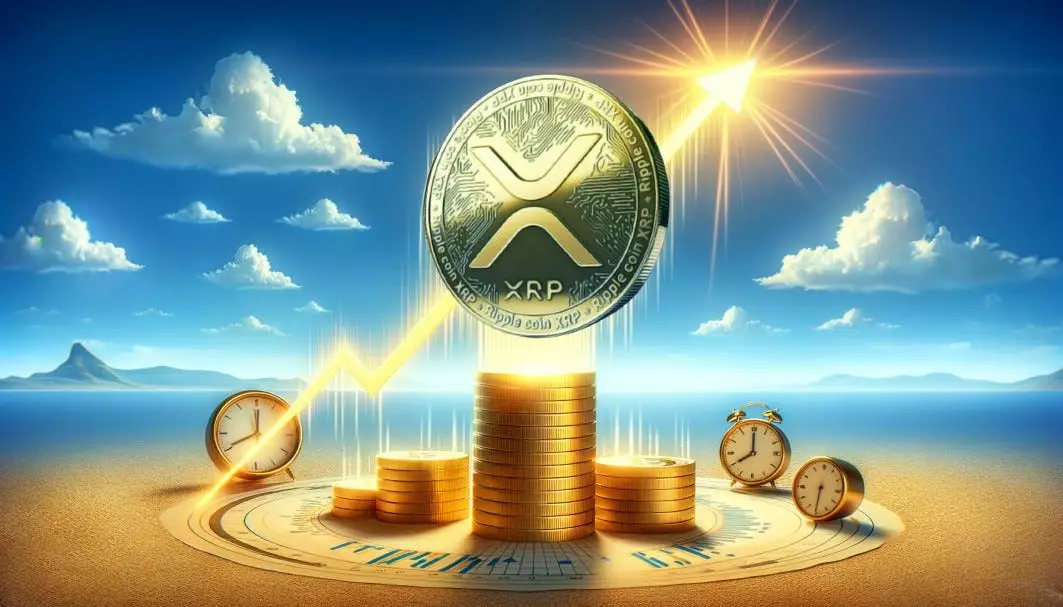In the volatile world of cryptocurrencies, XRP stands as a compelling case study of market dynamics and investor sentiment. After reaching a staggering seven-year high earlier this January, the altcoin has entered a period of what many are calling “consolidation.” This phase has seen a gradual decline of approximately 40% from its peak, but rather than view this as a negative, it could very well be the necessary groundwork for a significant bullish rally. The current support level at $2 portrays a resilience that suggests the market might just be on the brink of a transformative breakout.
Market Psychology and Technical Analysis
Recent insights from crypto analyst Dark Defender indicate that XRP’s price stagnation may soon reach an inflection point. The so-called “Final Consolidation” phase suggests that the anticipated bullish momentum is not just a hope but a well-analyzed trend. By using technical analysis, specifically the five-wave structure, Dark Defender brings a layer of credibility that may sway even the most skeptical investor. For him, the evolution of these five waves places XRP on a trajectory that could lead to unprecedented price levels.
The first wave, dubbed “Impulsive Wave 1,” could act as the springboard, propelling XRP back towards $3. While the world of crypto thrives on speculation, grounding such analysis in wave theory may attract attention. If Wave 1 kicks off as expected, we could witness a remarkable surge—a significant point emphasized by the analyst. However, it’s crucial to recognize that the second wave, which is expected to lead to a downturn back to around $2.2, will initiate a kind of financial “reset” that ultimately paves the way for future gains.
What’s Next for XRP: Realistic Expectations?
By the time the third wave rolls around, forecasts suggest an extraordinary climax, potentially positioning XRP to breach its all-time high of $3.8 amid a surge that could reach upwards of $5. The question arises: will the optimism of the technical analysis reflect in actual market movements? In a sector as whimsically unpredictable as cryptocurrency, the interplay between technical indicators and investor sentiment can often lead to unexpected outcomes.
Yet the patterns Dark Defender outlines aren’t merely speculative stargazing. They symbolize a robust algorithm, rooted in past performance and future potential. For investors with an eye on long-term gains, this analysis presents an appealing narrative about patience and strategic entry points that could pay off handsomely.
Vigilance Amidst Fluctuations: The Bearish Waves Ahead
But it’s not all sunshine and rainbows ahead. The anticipated bearish second and fourth waves must be taken seriously. The potential for a downside of at least 30% suggests that investors need to be prepared for turbulence in the price trajectories. Margin traps or encouragement of panic selling could hinder even the most valiant bulls in the face of bearish pressure.
Identifying support levels becomes crucial then—$1.88 and $1.63 are not just arbitrary numbers; they are critical indicators of where the price might stabilize amidst the market noise. Recognizing that not all waves are bullish is essential. Tactical positioning and risk management strategies will be the investor’s best tools to navigate the expected volatility.
Concluding Thoughts: The Bullish Horizon for XRP
As cautious as one should be, there’s a palpable excitement in the air surrounding XRP’s prospects. Possibilities hinted by experts pose overwhelming allure, underscoring how the crypto marketplace can quickly shift from consolidation to explosive growth. With the targets laid out, including striking numbers like $3.75 and the remarkable $6 threshold, there’s a blueprint emerging that could benefit the astute and the bold alike.
In a world thirsty for reliable direction amidst chaos, XRP represents not merely a financial investment but an ecosystem of opportunity. Investors should watch closely and remain vigilant; the power of the wave often lies in anticipating its rise and fall. Ultimately, XRP could offer more than just speculation—it could yield opportunities that redefine portfolios and portfolios themselves.


















